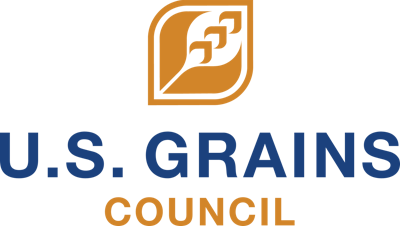
Staff from the U.S. Grains Council (USGC) Latin America (LTA) regional office recently hosted a delegation of representatives from the Colombian Ministry of Agriculture, the Colombian Agricultural Institute (ICA), and the Colombian National Institute of Drug and Food Surveillance (INVIMA). The visit aimed to provide the Colombian officials with a comprehensive understanding of the health and safety procedures along the U.S. export chain.
“Members of the group have substantial influence on the policies and processes related to grain import in Colombia, so it’s an important responsibility for the Council to show them the high standards of safety and quality assurance built into every aspect of the U.S. supply chain from farm to port,” said Diana Correa, USGC LTA marketing specialist.
Correa, alongside USGC Regional Consultant Alejandro Gonzalez, led the group to a Cargill facility in New Orleans. There, they met with staff from the U.S. Department of Agriculture’s Federal Grain Inspection Service (FGIS) and Animal and Plant Health Inspection Service (APHIS).
The visit included presentations on phytosanitary regulations required for U.S. grains to be exported to Colombia, pest risk assessments and related quarantine procedures, sampling and testing protocols, and emergency response planning. Following the presentations, the group toured the facility’s grain elevator and FGIS lab, gaining insights into the transport and safety logistics involved in commodity exports.
On the second day, participants visited grain loading facilities at Russell Marine Group, a leader in grain shipment inspections and chemical analysis based in New Orleans. The visit featured a walkthrough of the quality control methods and documentation required for grain exports.
The program concluded with a boat tour of local grain elevators and a meeting with staff from the Food and Drug Administration’s Center for Veterinary Medicine. This session provided a deeper understanding of U.S. policy requirements for pet foods.
“The Council’s goal for this group was to remove potential obstacles to grain exports to Colombia by minimizing uncertainty about the logistics of international trade, and I think we certainly accomplished that,” Correa said. “Attendees were very engaged in learning about the health standards of U.S. exports and will feel well-equipped to assess import policies in Colombia.”
This visit underscores the USGC’s commitment to fostering international trade relationships and ensuring that U.S. grain exports meet the highest standards of safety and quality.

















